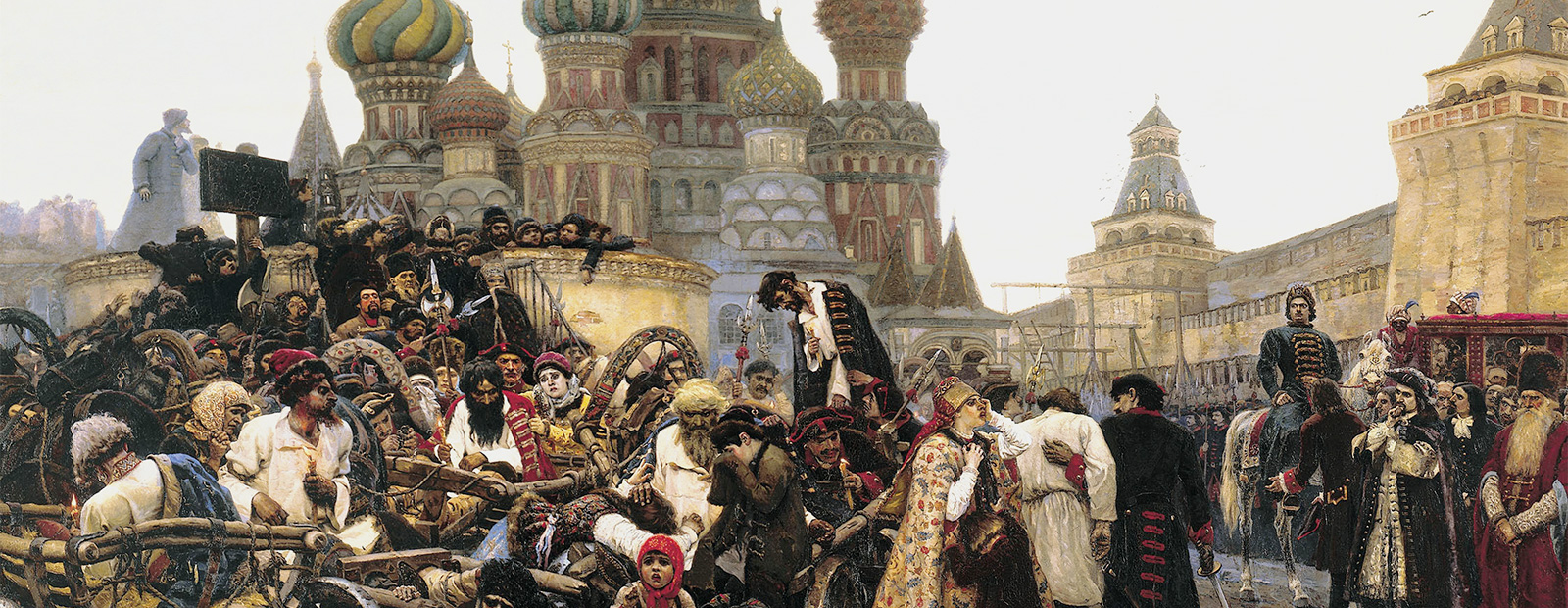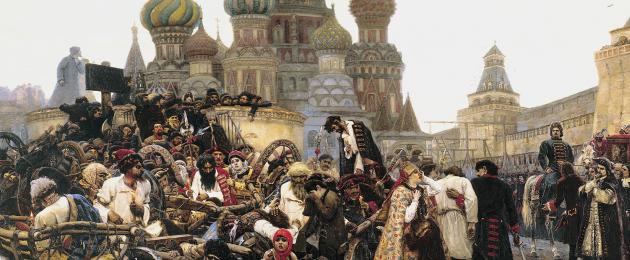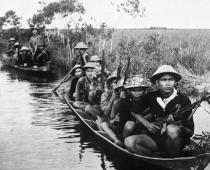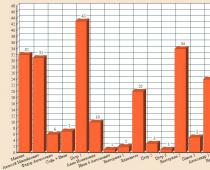June 28 (18th according to the Julian calendar), 1698, the rebellious archers were defeated by troops loyal to Peter I. This was far from their first conflict: Peter remembered the events of 1682 for the rest of his life, when the archers unleashed real terror against the Naryshkins, relatives of his mother, and their supporters. He also remembered how the conspirators from the archers tried to kill him in 1689. Their third performance proved fatal...
Streltsy army appeared in Russia in the middle. XVI century, in the era of Ivan IV, and made up the elite of the army. Foreign travelers who visited the Moscow kingdom often called them "musketeers". There was every reason for this: the archers were armed with both edged weapons (berdysh, sabers and swords) and firearms (squeakers, muskets), they could be both infantrymen and horsemen. Over time, the archers, in addition to military service, also began to engage in crafts and trade, were exempted from township taxes, and a special Streltsy order was created to resolve all issues of their activities. By the end of the 17th century, the streltsy army had gained significant influence in the state, de facto turning into a guard on which court groups could rely and which influenced decision-making. This clearly became clear after the 1682 rebellion, when it was the archers who insisted on the erection of two tsars to the throne at once - Peter I and Ivan V - under the regency of Princess Sophia. In 1689, part of the archers took the side of Sophia against Peter, but the matter ended with the victory of the latter and the conclusion of the princess in the Novodevichy Convent. Wide repressions against archers then, however, did not follow.
In 1697, Tsar Peter I left Russia for a while, leaving for the Great Embassy - a large diplomatic mission, in which he visited a number of European states and held negotiations with the most influential monarchs of the era. In his absence, the discontent that had been brewing among the archers began to grow from a deaf into an open one. They were dissatisfied with the fact that Peter preferred the regiments of the "new order" led by foreign generals - Patrick Gordon and Franz Lefort. The archers complained about the lack of food and wages, as well as the long separation from their families. In March 1698, 175 archers deserted from their regiments and went to Moscow to submit a petition outlining all their problems. In case of refusal, they were ready to start "beating the boyars." Ivan Troekurov, who headed the Streltsy order, ordered the arrest of representatives of the Streltsy, but they were supported by the assembled crowd of dissatisfied. The beginning of the rebellion was laid.
Soon, political reasons were added to the everyday reasons: among the archers and their supporters, rumors quickly spread that Peter had been replaced or even killed during his trip to Europe, and his double “from the Germans” was being brought here to Moscow. The rebels quickly established contacts with Princess Sophia, assuring her of their support, and she allegedly replied to them with two letters urging them to expand the uprising and not recognize the power of Peter. However, researchers are still not sure about the authenticity of these letters.
Fedor Romodanovsky
Prince Fyodor Romodanovsky, whom Peter actually put at the head of the state during his absence, sent the Semyonovsky regiment against the archers. With his help, the rebellious archers were forced to leave Moscow. This, however, led to the unification of all the rebellious regiments outside the capital and the removal of their colonels.
In the beginning. In June, about 2,200 rebels settled near the Resurrection New Jerusalem Monastery. It was here that they clashed with the troops that remained loyal to Peter I: the Preobrazhensky, Semyonovsky, Lefortovsky and Butyrsky regiments. All together there were twice as many as the rebel archers. Later they were joined by other pro-government forces led by the boyar Alexei Shein and General Patrick Gordon, as well as artillery. With such a balance of power, the outcome of the conflict was obvious. On June 18, a short battle took place, lasting about an hour and ending in the complete defeat of the archers.
There were not many deaths on the battlefield. Gordon wrote about 22 dead archers and about 40 wounded. Soon, the boyar Shein launched an investigation, as a result of which 56 people accused of organizing a riot were hanged, many participants in the riot were beaten with a whip and sent into exile. However, this punishment did not satisfy Peter at all. Returning from Europe, he launched full-scale repressions against the archers, in which more than a thousand people were sentenced to death, about 600 were beaten with a whip and exiled. The tsar seemed to want to put an end to the archery army so hated by him once and for all and, taking advantage of the riot, to get even with him for 1682.
Mass executions unfolded in different parts of Moscow. The largest of them were held in the village of Preobrazhenskoye near Moscow (now within the capital). According to some foreign eyewitnesses, Peter took a personal part in the execution and cut off the heads of five archers with his own hands, after which he forced his close associates to follow his example. Of course, they did not have experience in such a “craft”, therefore, they delivered blows inaccurately, thereby only increasing the torment of those doomed to death.
Another place of executions of archers was Red Square, in particular, Lobnoye Mesto. There is an ingrained stereotype that it was used exclusively for executions, which is why the “Execution Place” is often called the place of execution of death sentences today. In fact, this is not at all the case: the Execution Ground on Red Square served as a platform for the announcement of royal decrees and public appeals to the people, it also appeared in some ceremonies and rituals, for example, in religious processions on holidays. Only during the time of Peter I this place became stained with blood. In 1698-1699, here, as in Preobrazhensky, numerous executions of archers took place. Most likely, this is where the bad “fame” of the Execution Ground originates.
The Streltsy rebellion of 1698 and the massacre of its participants were reflected in Russian art in their own way. The most famous canvas on this subject is Vasily Surikov’s painting “The Morning of the Archery Execution”, which showed the horror of the unfolding confrontation and the tragic fate of the archers and their families. Hanged archers can also be seen in Ilya Repin's painting "Princess Sophia": the corpse of one of the executed is visible through the window of the cell.

Arseny Tarkovsky dedicated the poem "Peter's executions" to the Streltsy rebellion, which begins with these words:
In front of me is a block
Gets up in the square
Red shirt
Doesn't let you forget.
Anna Akhmatova also remembered the events of 1698 in the poem "Requiem". It was dedicated to the repressions of the late 1930s. The poet recalled how she stood in prison lines in Leningrad, her soul was torn by fear for her arrested son, Lev Gumilyov. The Requiem contains the following lines:
I will be like archery wives,
Howl under the Kremlin towers.
The fate of the archers is discussed in the novel by Alexei Tolstoy "Peter I" and the film "At the Beginning of Glorious Deeds" based on it, shot by Sergei Gerasimov in 1980.
- In contact with 0
- Google+ 0
- OK 0
- Facebook 0








